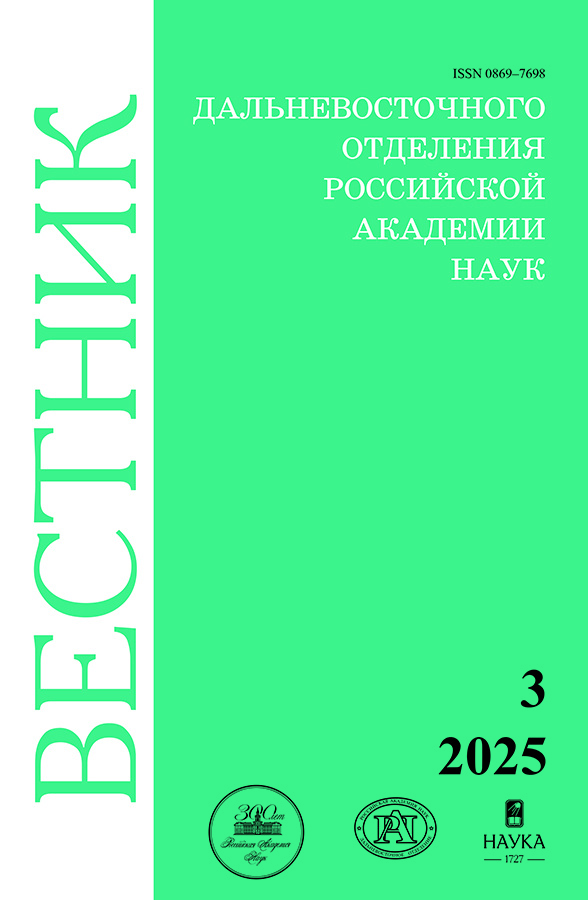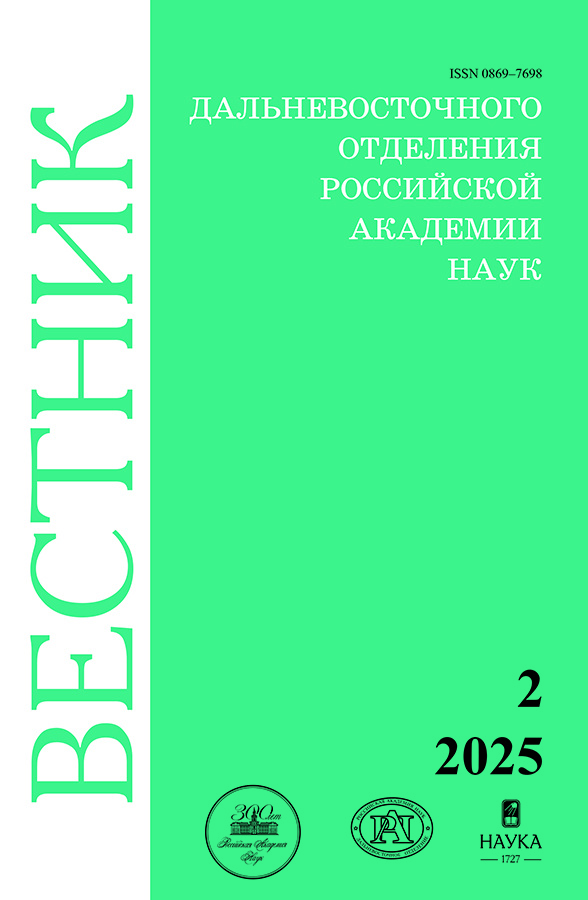Earthquake migration and slow strain waves
- Authors: Bykov V.G.1, Merkulova T.V.1
-
Affiliations:
- Kosygin Institute of Tectonics and Geophysics, FEB RAS
- Issue: No 2 (2025)
- Pages: 5-16
- Section: Earth and Environment Sciences
- URL: https://permmedjournal.ru/0869-7698/article/view/687223
- DOI: https://doi.org/10.31857/S0869769825020019
- EDN: https://elibrary.ru/GFTUMG
- ID: 687223
Cite item
Full Text
Abstract
Research of seismicity migration provide insight into the physical mechanisms of tectonic stress transmission and new opportunities for hazard assessment and prediction of various natural disasters associated with recent geodynamic activity. The review briefly presents the main results of studies of seismicity migration and the fundamental problem of tectonic stress transfer, obtained at the Institute of Tectonics and Geophysics, Far Eastern Branch of the Russian Academy of Sciences in the last decade.
Full Text
About the authors
Victor G. Bykov
Kosygin Institute of Tectonics and Geophysics, FEB RAS
Email: bykov@itig.as.khb.ru
ORCID iD: 0000-0002-0637-0112
Doctor of Sciences in Physics and Mathematics, Chief Researcher
Russian Federation, KhabarovskTatjana V. Merkulova
Kosygin Institute of Tectonics and Geophysics, FEB RAS
Author for correspondence.
Email: merkulova@itig.as.khb.ru
ORCID iD: 0000-0003-1283-5032
Candidate of Sciences in Geology and Mineralogy, Leading Researcher
Russian Federation, KhabarovskReferences
- Kasahara K. Migration of crustal deformation. Tectonophysics. 1979;52(1–4):329–341.
- Trofimenko S.V., Bykov V.G., Merkulova T.V. Seismicity Migration in the Zone of Convergent Interaction between the Amur Plate and the Eurasian Plate. Journal of Volcanology and Seismology. 2015;9(3):210–222.
- Bykov V.G., Trofimenko S.V. Slow strain waves in blocky geological media from GPS and seismological observations on the Amurian plate. Nonlinear Processes Geophysics. 2016;23(6):467–475.
- Trofimenko S.V., Bykov V.G., Merkulova T.V. Space-time model for migration of weak earthquakes along the northern boundary of the Amurian microplate. Journal of Seismology. 2017;21(2):277–286.
- Sherman S.I. Deformation waves as a trigger mechanism of seismic activity in seismic zones of the continental lithosphere. Geodynamics & Tectonophysics. 2013;4(2):83–117.
- Zhao G., Yao L. Earthquake migration in East Asia mainland (I) – the migration of huge earthquakes and volcanic activity from West Pacific trench to the Chinese mainland. Acta Seismologica Sinica. 1995;8(4):541–549.
- Ishii H., Sato T., Tachibana K., Hashimoto K., Murakami E., Mishina M., Miura S., Sato K., Takagi A. Crustal strain, crustal stress and microearthquake activity in the northeastern Japan arc. Tectonophysics. 1983;97(1–4):217–230.
- Mino K. Migration of great earthquake along the subduction zone, of Japan Archipelago. Journal of the Seismological Society of Japan. 1988;41(3):375–380.
- Bykov V.G., Merkulova T.V. Stress transfer and the impact of the India-Eurasia Collision and the Western Pacific Subduction on the geodynamics of the Asian Continent. Open Journal of Earthquake Research. 2022;11(4):73–88.
- Bykov V.G., Merkulova T.V., Andreeva M.Y. Stress transfer and migration of earthquakes from the Western Pacific subduction zone toward the Asian continent. Pure and Applied Geophysics. 2022;179(11):3931–3944.
- Bykov V.G., Merkulova T.V. The wave geodynamic impact of tectonic processes on the Amurian plate. Russian Journal of Pacific Geology. 2021;15(4):345–358.
- Vikulin A.V. Migratsiya ochagov sil’neyshikh Kamchatskikh i Severo-Kuril’skikh zemletryaseniy i ikh povtoryayemost’. Vulkanologiya i Seysmologiya. 1992;(1):46–61.
- Vikulin A.V. Migration and ostsillations seismic activity and wave motions of the Earth’s crust. In: Problems of geodynamics and earthquake forecasting, The I Russian-Japanese workshop (Khabarovsk, September 26–29, 2000). Khabarovsk: ITiG FEB RAS; 2001. P. 205–224.
- Bormotov V.A., Voitenok A.A. Patterns of earthquake migration in Priamurie Region. Geology of the Pacific Ocean. 2000;15(2):291–306.
- Bykov V.G., Merkulova T.V. Earthquake migration and hidden faults in the Priamurye Region. Russian Journal of Pacific Geology. 2020;14(4):326–339.
- Bykov V.G. Sine-Gordon equation and its application to tectonic stress transfer. Journal of Seismology. 2014;18(3):497–510.
- Rubinstein S.M., Cohen G., Fineberg J. Detachment fronts and the onset of dynamic friction. Nature. 2004;430(7003):1005–1009.
- Nikolayevskiy V.N. Geomekhanika. Sovremennyye glavy. Moscow: IFZ RAN; 2014. 484 s. (In Russ.).
- Bykov V.G. Development of sliding regimes in faults and slow strain waves. Physical Mesomechanics. 2020;23(3):271–278.
- Antonovskaya G.N., Konechnaya Ya.V., Basakina I.M. The Influence of Mid-Oceanic Ridges on the Seismicity of the Novaya Zemlya Archipelago. Geotectonics. 2023;57(6):759–773.
- Vladimirova I.S. Study of the features of seismogenic activation of the Chilean Subduction Zone at the beginning of the 21st century. Doklady Earth Sciences. 2022;507(2):1112–1117.
- Sokolov S.Yu., Abramova A.S., Shkarubo S.I., Ananiev R.A., Moroz E.A., Zaraiskaya Yu.A. Neotectonics of the Barents Sea Shelf Eastern Part: Seismicity, Faults and Impact of the Atlantic–Arctic Rift System. Journal of Volcanology and Seismology. 2024;18(1):64–77.
- Lobkovsky L.I. Possible seismogenic trigger mechanism of abrupt activation of methane emission and climate warming in the Arctic. Arctic: Ecology and Economy. 2020;39(3):62–72.
- Lobkovsky L.I., Baranov A.A., Vladimirova I.S., Alekseev D.A. The strongest earthquakes and deformation waves as possible triggers of climate warming in the Arctic and the destruction of glaciers in Antarctica. Vestnik of the RAS. 2023;93(6):526–538.
Supplementary files










